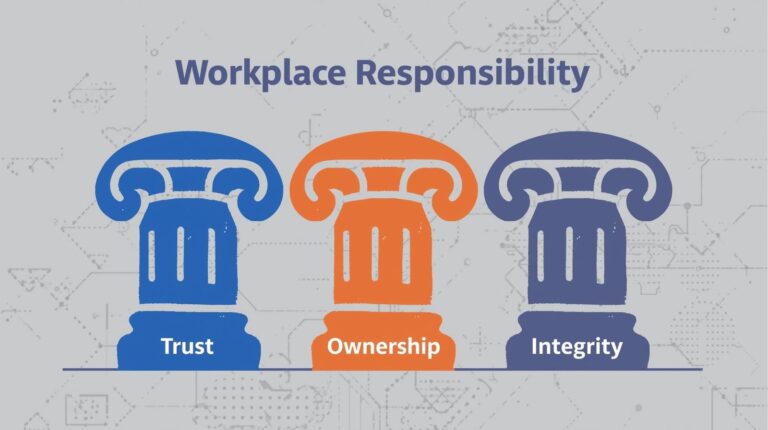Preparing for the Succession Planning Process: Laying the Foundation for Leadership Success
Succession planning is one of the most strategic moves a business can make. But before you can identify future leaders or draft development plans, there’s a crucial step that often gets overlooked: preparation. The success of your succession planning process hinges on careful groundwork. Without it, even the most well-intentioned plans can falter, leaving organizations vulnerable during leadership transitions.
Preparation isn’t just administrative. It’s about understanding your business, identifying key roles, gathering critical data, and setting parameters for decision-making. When done effectively, preparation ensures the succession planning process is strategic, inclusive, and aligned with your organization’s goals.
In this article, we’ll explore how to prepare for a succession planning process that builds a resilient leadership pipeline, ensures business continuity, and supports long-term growth.
Why Preparation Matters
Succession planning isn’t a one-off exercise. It’s a comprehensive process that integrates leadership development, operational needs, and organizational culture. Jumping straight into identifying successors without preparation can lead to gaps, poor alignment, and lost opportunities.
Preparation matters because it:
Clarifies Objectives: Ensures everyone involved understands why succession planning is being undertaken and what it aims to achieve.
Aligns Stakeholders: Engages executives, managers, and HR early to create buy-in and a shared understanding.
Provides Accurate Data: Gathers the operational, performance, and skills data needed for informed decision-making.
Minimizes Risks: Helps anticipate challenges, including resistance, skills gaps, or logistical hurdles.
Sets the Stage for Success: Ensures the planning process is methodical, strategic, and tailored to your organization’s needs.
A well-prepared succession plan is more than a “who will replace whom” checklist—it’s a strategic roadmap that supports long-term growth.
Setting Parameters for the Planning Process
The first step in preparation is defining the scope and parameters of your succession planning process. Questions to consider include:
Which roles are critical to the company’s long-term success?
What timeline makes sense for leadership transitions?
Which departments or teams require focused succession planning first?
Are there specific skills, experiences, or qualifications required for key roles?
Setting parameters creates clarity. It ensures that the planning process is purposeful and focused, rather than reactive or ad hoc. It also allows your organization to allocate resources efficiently, directing attention where it matters most.
Should You Establish a Committee?
Succession planning is not a solo effort. Involving a cross-functional committee can provide diverse perspectives and enhance buy-in. Consider including:
Senior executives who understand strategic priorities.
HR professionals who can manage the process and track development metrics.
Department heads who know team strengths, weaknesses, and potential talent.
A committee ensures that decisions are balanced, transparent, and reflective of the organization’s needs. It also spreads accountability, which strengthens commitment to the plan’s success.
Gathering Operational Data
Data is the backbone of informed succession planning. To make effective decisions, you need a clear picture of your organization’s current state and potential future needs. Key types of data to collect include:
Employee Performance Data: Who consistently meets or exceeds expectations? Who has leadership potential?
Skill Inventories: What skills exist across the organization? Where are gaps that future leaders need to fill?
Workforce Demographics: Who is nearing retirement or considering career changes? Which positions are at risk of turnover?
Business Strategy Alignment: What future initiatives or market shifts might require new capabilities or leadership styles?
Gathering this data may involve reviewing performance appraisals, conducting talent assessments, and interviewing managers. The goal is to build a comprehensive understanding of the organization’s strengths, gaps, and opportunities.
The Role of Mentorship in Preparation
Preparing for succession planning isn’t just about data—it’s also about relationships. Mentorship plays a pivotal role in shaping potential leaders and ensuring they’re ready to step into key roles.
Mentorship allows experienced leaders to:
Share institutional knowledge and strategic insights.
Model leadership behaviors and decision-making.
Guide high-potential employees through complex challenges.
Build confidence and competence in their successors.
Including mentorship in your preparation phase sets the stage for a succession plan that is both practical and transformational.
A Practical Illustration: Preparing for Success
Consider a mid-sized manufacturing firm anticipating a wave of retirements among senior managers. The leadership team wants to ensure continuity but recognizes that jumping straight into candidate selection could be risky.
They start by establishing a succession planning committee, including HR, senior management, and department leads. They set clear parameters, identifying critical roles and outlining the skills required for future leadership.
Next, they gather operational data: performance metrics, skill assessments, and upcoming retirement timelines. This data provides insights into talent gaps and helps identify high-potential employees for development.
Finally, they implement mentorship pairings, where senior leaders guide potential successors through strategic projects and decision-making exercises.
By the time the formal succession planning process begins, the organization has clarity, alignment, and a pipeline of emerging leaders ready for development.
Common Challenges in the Preparation Phase
Even with careful planning, organizations can face challenges, such as:
Incomplete Data: Employee performance or skills may not be fully documented, making assessments difficult.
Resistance from Stakeholders: Some leaders may resist formal succession planning, fearing exposure or change.
Unclear Priorities: Without defined parameters, planning can become fragmented or unfocused.
Limited Resources: Time, budget, and expertise can constrain preparation efforts.
Addressing these challenges requires proactive communication, transparency, and support from leadership. Preparing stakeholders for the process and highlighting the long-term benefits can overcome most resistance.
Strategies to Ensure Effective Preparation
Communicate Early and Often: Make sure everyone understands the purpose, benefits, and scope of succession planning.
Involve the Right People: Engage executives, managers, and HR in setting priorities and evaluating talent.
Use Comprehensive Data: Collect both quantitative metrics and qualitative insights to inform decisions.
Document Clearly: Keep records of decisions, plans, and development strategies for accountability.
Start Mentorship Programs Early: Pair potential successors with experienced leaders to accelerate development.
Review and Adjust: Continuously assess whether preparation efforts align with evolving business needs.
By following these strategies, organizations can ensure that succession planning is deliberate, data-driven, and aligned with long-term goals.
The Long-Term Impact of Effective Preparation
Preparation isn’t just about making the succession planning process smoother—it has tangible long-term benefits:
Stronger Leadership Pipeline: Leaders are ready to step into critical roles without delay.
Business Continuity: Operations continue seamlessly even during leadership transitions.
Employee Engagement: Staff see opportunities for growth and are more motivated to perform.
Organizational Resilience: The company can adapt to market changes, retirements, or unexpected departures.
A well-prepared succession planning process positions the organization for sustained success and reduces the risks associated with leadership transitions.
Final Thoughts
The preparation phase is where succession planning either succeeds or struggles. Taking the time to set parameters, gather operational data, establish a committee, and integrate mentorship ensures that your process is strategic, comprehensive, and effective.
Succession planning is more than identifying “who’s next.” It’s about creating a deliberate, well-supported pipeline of future leaders who can carry your organization forward. Preparation lays the foundation for this success, enabling businesses to transition smoothly, maintain culture, and achieve long-term growth.
Remember, preparation is proactive, not reactive. The more thoughtful the groundwork, the more resilient your organization will be when leadership changes inevitably occur. For any business seeking continuity, growth, and long-term impact, investing time in preparation is an investment in the future.



